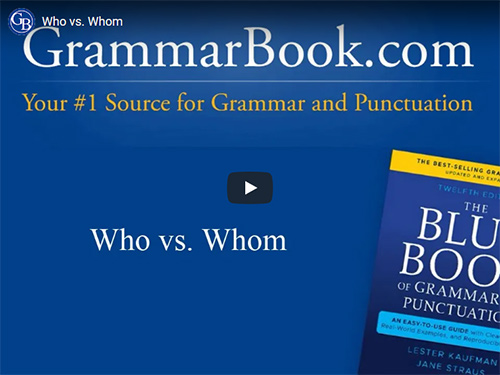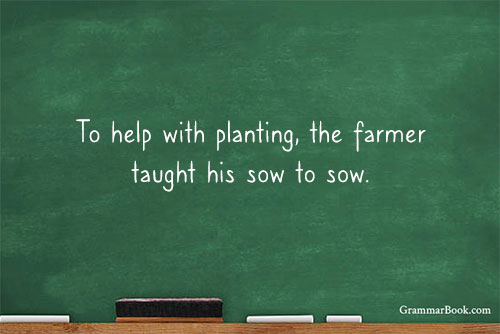|
Imagine you are driving down the road in your car. Picture the signs, lights, and symbols you see on the way to help you know where to go at which speed, as well as when to stop and go. Now envision what your route would be like if those indicators were absent or misplaced.
Punctuation is to writing what signs, lights, and symbols are to driving. It provides clarity, meaning, and structure, as well as pacing, pause, and direction. With that in mind, consider the following:
| I'm glad you called, I wish you did more often, why not call again soon? |
We can interpret what this aims to convey—the central ideas are apparent. At the same time, we recognize the thoughts' lack of structure. They simply don't look right as presented. This is because they are independent statements with nothing to correctly establish them as such. There is a name for this type of grammatical error.
Comma Splice: Definition and Examples
A comma splice occurs when two independent clauses are connected (spliced together) with only a comma. It is a common error in English. You might also hear a comma splice referred to as a run-on sentence.
Comma splices tend to appear when a writer senses a need for a pause according to the writer's ear without the proper, available tools for creating one.
Examples
London is great, you should visit Piccadilly for sure.
The snow is falling fast, it's too bad you don't have a shovel or anything else.
A guitar can lose tuning when you bend the strings a lot, be sure to check it between songs. |
Each sentence includes independent clauses improperly spliced by a comma.
Comma Splice: How to Avoid It
Depending on the context, comma splices can be corrected with a:
Let's return to one of our examples:
| London is great, you should visit Piccadilly for sure. |
Now let's apply each suitable fix.
Comma with coordinating conjunction
London is great, and you should visit Piccadilly for sure.
Period
London is great. You should visit Piccadilly for sure.
Semicolon
London is great; you should visit Piccadilly for sure.
Colon or dash
London is great: You should visit Piccadilly for sure.
London is great—you should visit Piccadilly for sure. |
Each treatment resolves the comma splice with punctuation that offers subtle variances of emphasis and effect. You may recognize we did not apply a phrase or a subordinating conjunction. This is because they would have been less suited to the context. If we had written them as such, they might appear as follows:
Subordinating conjunction
Because London is great, you should visit Piccadilly for sure.
Phrase (participial)
Knowing London's greatness, you should visit Piccadilly for sure. |
While these versions may pass some people's inspection, they are less precise with the thoughts' original aim. However, we could apply these formats to other examples above.
Subordinating conjunction
Because a guitar can lose tuning when you bend the strings a lot, be sure to check it between songs.
Phrase (prepositional)
With the snow falling fast, it's too bad you don't have a shovel or anything else. |
Interpreting the context is important in resolving a comma splice. Let's look at another example of this.
| I will not eat that soup, it always leaves a bad aftertaste. |
We have two independent clauses incorrectly spliced by a comma. We'll try fixing it with a comma and a conjunction:
| I will not eat that soup, and it always leaves a bad aftertaste. |
That sounds awkward. Let's subordinate one of the clauses instead.
| I will not eat that soup, because it always leaves a bad aftertaste. |
We could also use a colon, a dash, or a semicolon:
I will not eat that soup: It always leaves a bad aftertaste.
I will not eat that soup—it always leaves a bad aftertaste.
I will not eat that soup; it always leaves a bad aftertaste. |
Comma Splice: Tricky Insertions
Be on the lookout for a comma splice that slips into content with a conjunctive adverb, a transitional phrase, or a divided quotation.
Conjunctive adverb
I don't understand Spanish, however my wife does. (comma splice)
I don't understand Spanish; however, my wife does. (corrected with a semicolon between independent clauses and a comma after the conjunctive adverb)
Transitional phrase
Mario is a master carpenter, in fact he has thirty different hammers. (comma splice)
Mario is a master carpenter. In fact, he has thirty different hammers. (corrected with a period between independent clauses and a comma after the opening phrase of the second sentence)
Divided quotation
"Give me that taco," Julian said, "I ordered the one with chicken." (comma splice)
"Give me that taco," Julian said. "I ordered the one with chicken." (corrected with a period after the attribution to separate the independent clauses) |
Comma Splice: Examples of Acceptable Use
A comma splice may occasionally serve a writer's style and intent. This application mainly aims for a distinctive rhythm, pattern, or voice. While rare in formal and academic writing, it can be found in fiction, memoirs, and narrative journalism.
Examples
He is patient, he is humble, he is wise.
She pushed, she strained, she triumphed.
It was the best of me, it was the worst of me. |
Many of us also are familiar with balanced structures spliced by a comma such as:
The more he grows, the more he knows.
The better the drummer, the greater the band.
The less you listen, the less you understand. |
Comma splices are acceptable when they appear with a statement and an echo question as well:
| "You're the king of the world, aren't you, Jack?" |
Related Topic
Dependent and Independent Clauses
Commas with Independent Clauses
|





